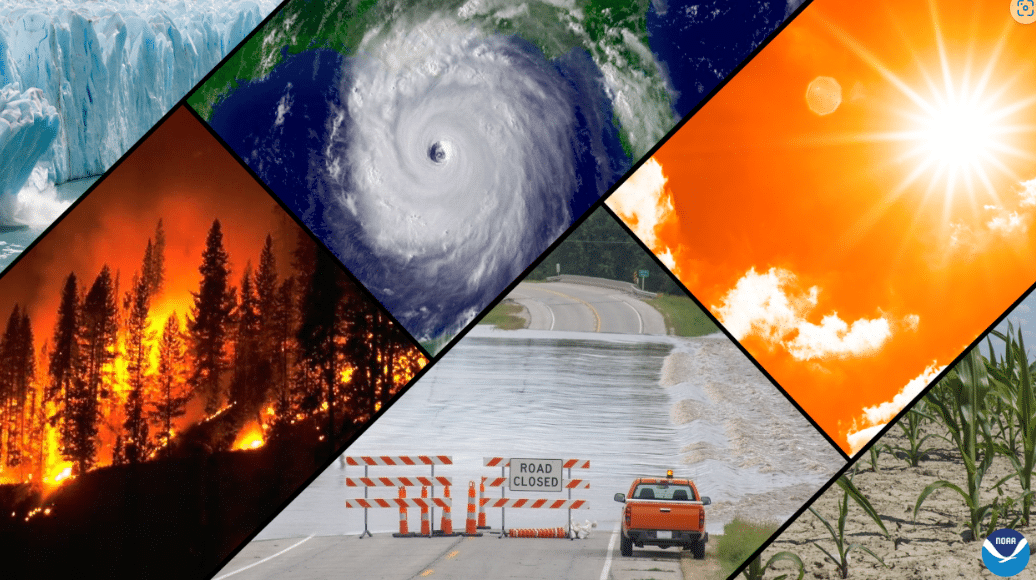The National Oceanic and Atmospheric Administration (NOAA) released its June 2024 Climate Science and Services Monthly Update, highlighting unprecedented climate milestones. These findings are significant for insurance companies, lawyers, and the public.
January-June 2024 Summary:
– Combined Land & Ocean: The first half of 2024 saw the highest temperatures on record, 1.29°C (2.32°F) above the average.
– Predictions: There is a 59% chance that 2024 will become the warmest year on record and a 100% certainty it will rank within the top five.
– Insurance Companies: Higher temperatures can lead to more frequent and severe weather events, increasing the number of claims and affecting risk assessments. Insurers need to adjust their models and premiums to account for these changes.
– Lawyers: This data can support climate-related litigation, such as property damage, health impacts, and corporate accountability. Lawyers can use these records as evidence in court.
Everyone: Understanding these trends helps individuals prepare for potential impacts on their daily lives, such as heat waves, and plan for future resilience.
The weather extremes continue.
June 2024:
– Temperature: The contiguous U.S. experienced its second warmest June on record, with temperatures averaging 71.8°F, which is 3.4°F above the norm.
– Precipitation: Precipitation was slightly below average, at 2.74 inches.
January-June 2024:
Temperature: The average temperature for this period was 50.9°F, 3.4°F above normal, and the second warmest on record.
– Precipitation: The period was the eleventh wettest, with an average of 17.36 inches, 2.06 inches above normal.
Insurance Companies: Increased temperatures and precipitation variability can lead to higher property damage and business interruption claims. Insurers must be prepared for these trends to manage risks effectively.
– Lawyers: Climate anomalies can lead to a rise in litigation related to environmental impacts, insurance disputes, and liability claims. Lawyers need to stay informed about these trends to advise their clients accurately.
– Everyone: Higher temperatures and changing precipitation patterns can affect health, agriculture, and water resources. Awareness of these trends helps individuals make informed decisions about their lifestyle and investments.
2024 So Far: The U.S. has experienced 15 weather and climate disasters, each costing over a billion dollars. These events include hurricanes, wildfires, and severe storms, which cause immediate damage and have long-term economic repercussions.
– Insurance Companies: The increasing frequency and cost of extreme weather events require insurers to reassess their coverage options and pricing models. They must also enhance their claims processing capabilities to manage the surge in claims.
– Lawyers: The economic impact of these disasters can lead to a rise in lawsuits for compensation and liability. Lawyers need to be prepared to oversee a growing number of climate-related cases.
– Everyone: Understanding the economic impacts of climate disasters helps individuals and businesses plan for financial resilience. It emphasizes the importance of having adequate insurance coverage and disaster preparedness plans.
Here is the forecast for how things could play out.
– La Niña: There is a 70% chance La Niña conditions will develop by August-October 2024 and a 79% chance they will persist into the Northern Hemisphere winter 2024-25.
– Insurance Companies: La Niña conditions can increase the risk of certain weather events, such as hurricanes and droughts, impacting the frequency and severity of insurance claims.
– Lawyers: Understanding ENSO conditions helps lawyers anticipate potential legal issues related to weather impacts, such as property damage and agricultural losses, and advise their clients accordingly.
– Everyone: Knowing about La Niña conditions allows individuals to prepare for weather-related impacts, such as increased rainfall or droughts, and take necessary precautions to protect their property and well-being.
Next month’s forecast should be interesting.
August 2024 Forecast: Predictions indicate a high probability of above-average temperatures for much of the U.S., with varying precipitation probabilities. The three-month outlook (August-October) suggests continued above-average temperatures and mixed precipitation patterns, which could exacerbate drought conditions in some areas while alleviating them.
Here is a link to the full report.

